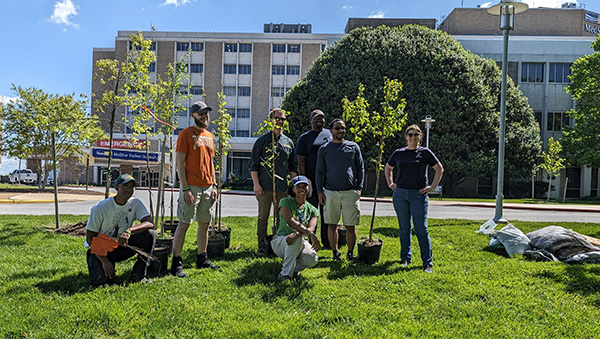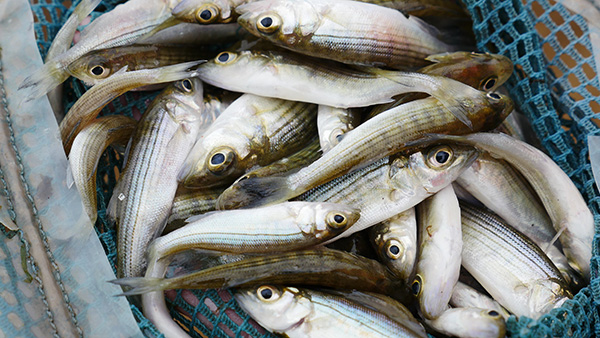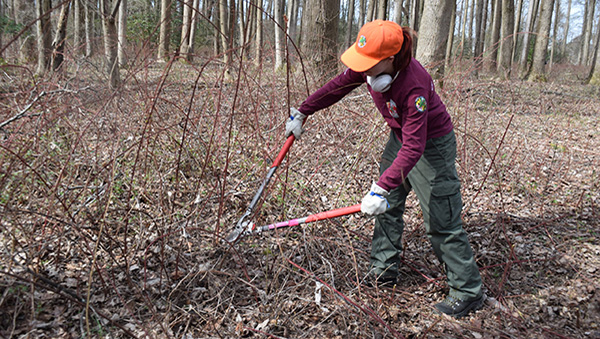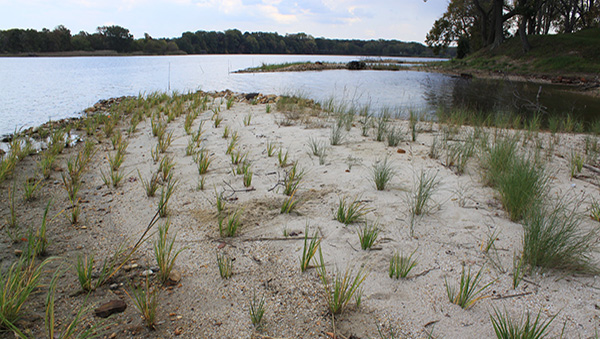Climate change can negatively impact the ecosystems of Maryland. Invasive species, increasing temperatures, flooding, and wildfires are all harmful threats to the habitats and species of Maryland. The Department of Natural Resources is working to respond to these impacts and mitigate them through a variety of programs, plans, and restoration techniques in order to protect the many unique plant and animal species that are essential to Maryland’s ecosystem.
Climate Adaptive Forests

Forests are a great, natural tool to remove greenhouse gasses from the atmosphere. One acre of forest absorbs six tons of carbon dioxide. DNR is using science, restoration and management to enhance the state’s forests capacity as carbon sinks. That includes the ambitious
5 Million Trees Initiative, as well as using modeling to determine the best forest management techniques.
Climate change also puts forests at greater risk. Sea-level rise threatens coastal forests, invasive species are expanding, and wind storms and forest fires are becoming more common. The Maryland Forest Service is addressing these changes with
climate adaptive forestry management and the use of prescribed burns.
Return to Top
Climate Adaptive Fisheries Management

Warming temperatures will have a significant effect on the fish and aquatic life in Maryland waters. Changes could bring new species to the area, while also disrupting the stock dynamics of culturally and economically important species. Ocean acidification could impair shellfish development and cause an increase in low-oxygen conditions. Hot or stormy conditions may limit fishing activity.
To protect both the state’s fish species and the people who catch them, the Department of Natural Resources is monitoring changes to fish species, building resilient fishing infrastructure, and using climate data to inform
adaptive fisheries management.
Return to Top
Climate Adaptive Species Management

Climate change is already affecting the biological makeup of Maryland. Warmer winters and hotter summers are making the state less hospitable to some species, while other species are expanding their territory, including many invasive species.
While the Department of Natural Resources is actively removing invasive species, staff are also working to protect threatened animals and plants, with everything from pollinator fields at solar facilities to floating rafts for nesting waterbirds. Protection of Maryland’s species is being facilitated by state initiatives, such as the
State Wildlife Action Plan, and data, such as
Targeted Ecological Areas.
Return to Top
Habitat Restoration and Management in a Changing Climate
 Habitat areas across Maryland are also under threat by climate change. Rising sea levels endanger coastal regions. Warm water contributes to more detrimental algal blooms. Increasing wind storms and forest fires can degrade forest habitat.
Habitat areas across Maryland are also under threat by climate change. Rising sea levels endanger coastal regions. Warm water contributes to more detrimental algal blooms. Increasing wind storms and forest fires can degrade forest habitat.
The Department of Natural Resources is working to restore marshes and build coastal resilience, as well as dredge waterways and repurpose dredge material for habitat spaces. A wide variety of Chesapeake Bay restoration programs include work to replant underwater grasses and reestablish thriving reefs of oysters, both providing critical underwater habitat for Bay life. Forest habitats are being restored with efforts such as the
5 Million Trees Initiative.
Return to Top